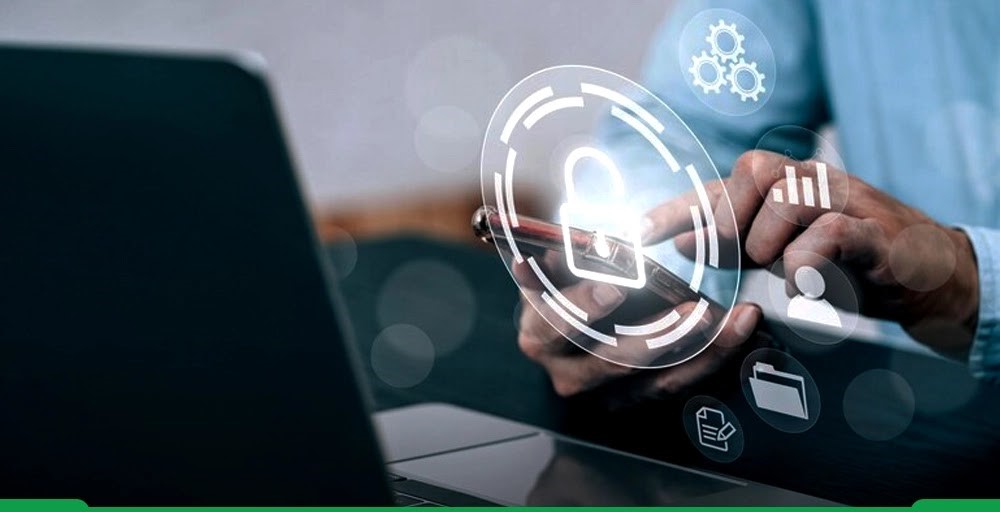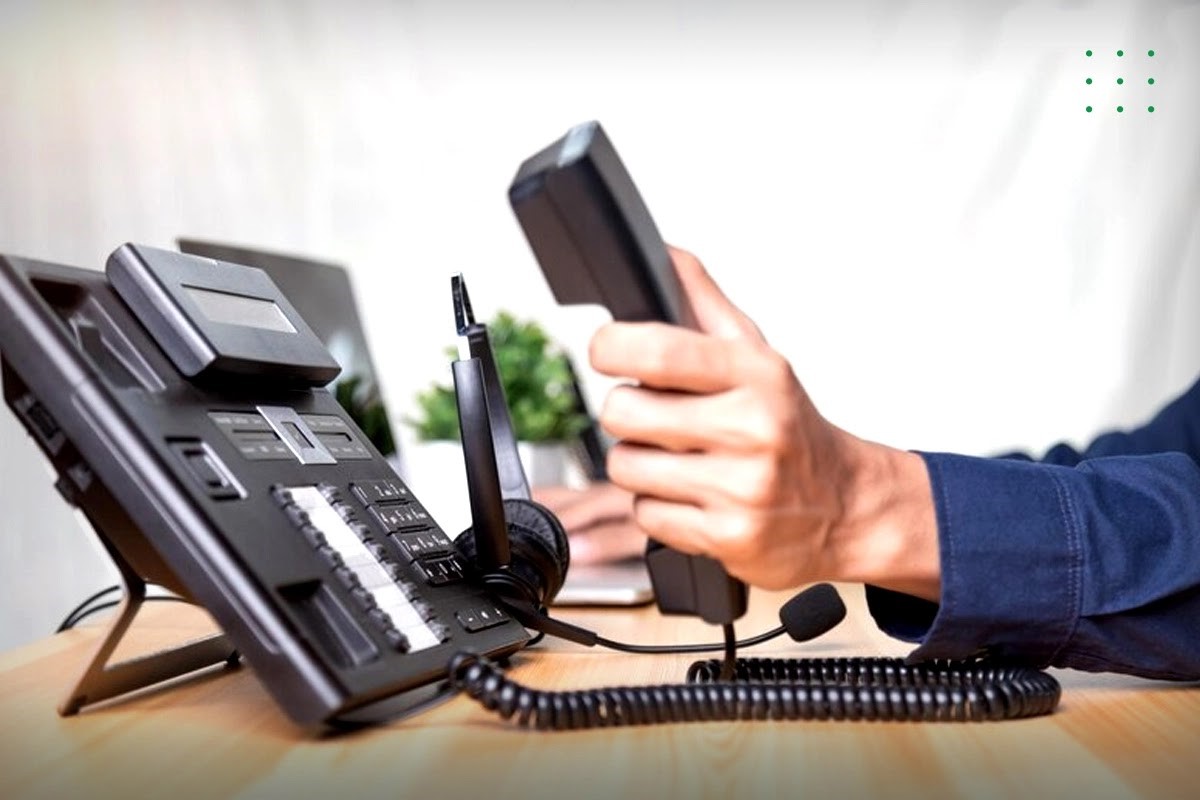#Ensuring Data Security: A Guide to Secure VoIP Communication

Table of Contents
Ever heard of secured VoIP Data Security? Well, it’s time to implement it!
As of 2023, VoIP has become a part of our everyday life, making it more comfortable by meeting our communication demands effortlessly. While it offers a convenient and cost-effective solution, on the other hand, it presents significant security challenges. Having said that, ensuring the privacy of our virtual conversations is of the highest importance, and achieving it can prove to be a burdensome task.
💡Did you know? 62% of businesses in 2018 experienced social engineering hacks, a type of phone scam that masquerades as a genuine call to get valuable information about a given company. – ThriveDX
In this article, we provide you with a complete overview of VoIP security, the tech and tools used, threats faced, and the best practices to negate those risks.
Before we dive deeper into the world of VoIP, let’s first understand what exactly is VoIP.
Understanding VoIP

Voice over Internet Protocol or VoIP communication is a technical yet simple term that is used to define the technology that allows voice, message, or other media sessions to be conveyed over the Internet or IP-based networks. In simpler terms, it enables you to make and receive phone calls and messages and engage in other communication platforms via the Internet.
How does it work?
Well, it’s straightforward: it works by converting analog signals into digital packets that can be transmitted over the Internet.
For nerds, here is a step-by-step process
- Analog to Digital: Firstly, your voice is converted into digital data
- Data Packetization: The digital data is divided into several important packets
- Internet transmission: The packets are transmitted over the Internet
- Packet Routing: The packets are routed to the receiver
- Digital to Analog: Now, the digital packets are converted back to analog signals
- Playback: Analog signals are played at the receiver’s device
- 2-way communication: Happens simultaneously to enable real-time communications
- Quality of Service(QoS): Lastly, QoS techniques are used to minimize latency and packet loss.
Common Use Cases for VoIP
VoIP technology has been around for decades. Lately, it has gained the fame it deserves and is being used across various business industries and personal use cases. Coming out to be a versatile masterpiece, its use cases are bound by our limited imagination. However, some of the common use cases for VoIP are voice calls, video conferencing, unified communications, international calling, telemarketing, and remote work.
VoIP Security Tools and Technologies
Now that you know what VoIP is, how it works, and its use cases. Let’s dig a bit deeper and understand the security tools and technologies tools involved in it

VoIP Security Software: As per its name, VoIP security software is specifically designed to protect a VoIP system. Some examples of this softwares are firewalls, anti-viruses, and intrusive threat detection systems.
Intrusion Detection and Prevention Systems (IDPS): IDP systems are here to root out suspicious activities or malicious actors who can potentially compromise the system. These can give you an upper hand in monitoring and dealing with threats.
Session Border Controllers (SBCs): Similar to the border control of a nation. SBCs act as a line of defense that enforces security policies, performs background checks, and checks network address transitions to protect against VoIP-specific issues.
Quality of Service (QoS) Solutions: We have already mentioned this, but here we are again. Though primarily QoS is not a security tool, it plays a significant role in ensuring a secure and reliable VoIP Service.
Implementing Secure VoIP
If you’ve read this far, that means you are looking to implement a secure VoIP. Here is a breakdown of the key phases that are a must to be followed.
Assessing Current VoIP Security: To begin with, you first need to identify the vulnerabilities, potential threats, and weaknesses of your current system.
Creating a Security Policy: Next, you need to develop a comprehensive security policy that outlines every guideline and the best practices that need to be followed.
Securing Endpoints: Following that, ensuring the security of all endpoints like cellphones and other devices must be done. You might also need to implement new strong and unique passwords and enable 2FA.
Securing Network Infrastructure: Later, you will have to secure the complete network infrastructure by commissioning firewalls, intrusion detection and prevention systems(IDPS), network segmentation, and session border controls(SBC).
Monitoring and Auditing VoIP Traffic: Finally, you should continuously monitor and audit your VoIP traffic and overall infrastructure to detect unusual patterns and data breaches to be dealt with immediately.
Threats to VoIP Data Security
Every coin has its flip side, which means VoIP itself has some flaws that can come out to be possible threats. Let us discuss the frequent threats to VoIP data security.

Eavesdropping: You may have heard walls have ears and doors have eyes. This is true in the case of VoIP, as it is an internet-based technology. Attackers can easily gain access to a user’s network, get their hands on sensitive information, and compromise privacy during the conversation.
Denial of Service (DoS) Attacks: Just like all networks, VoIP suffers from this ailment, and there’s no cure for it. When a DoS attack occurs, this means the attackers have bloated the network with an excessive volume of traffic or requests, and you cannot use it for the time being.
Call Interception: Well, you may have guessed what this is. If not, this means a raider has exploited the loopholes or gaps in the system to intercept an ongoing call or just divert calls to a different point. There are many ways to accomplish this, and the reason to do so also varies.
Malware and Viruses: The technological threat that makes everyone suffer and has been around since the beginning of the Internet. Reminiscence to any other system: VoIP technologies are vulnerable to viruses and other malware threats.
Identity Theft: Lastly, the biggest threat that has crossed the eyes of almost everyone. This means it is possible for attackers to steal your personal information and credentials to impersonate you and commit fraudulent activities on your behalf.
Security Best Practices for VoIP
Considering the above-mentioned threats, you might be looking for solutions to tackle them. Here’s what you need to do:
Use strong passwords and enable 2FA: Use unique, complex, and different passwords for your accounts and enable two-factor authentication. If you want to be savvy, use a password generator and link your account to some authenticator app.
Encryption Techniques: You can make the most of encryption techniques to secure your account and personal details. Use methods like
- Transport Layer Security (TLS): To protect your calls and account details, employ TLS to encrypt the signaling data.
- Secure Real-time Transport Protocol (SRTP): To ensure the confidentiality and integrity of the conversation, use SRTP to encrypt the actual voice calls.
Firewall Configuration: To enhance security, it is recommended to set up a firewall configuration that only permits access to trusted members with specific IP addresses for your VoIP system. Additionally, implementing a vigilant monitoring system to inspect incoming and outgoing data packets can further strengthen your network security.
Network Segmentation: Another way to enhance security is by isolating your VoIP network from other networks. You can achieve this by implementing Virtual Local Area Networks (VLAN).
VoIP Security Protocols: You can also utilize in-built VoIP security features and protocols to protect your account and communication details. One example is SIP, which can be used to signal and supervise interactive communication sessions.
Regular Software Updates: The most effective solution is to regularly update your VoIP system, including your servers and private information, with security patches and updates to address known vulnerabilities.
Security Awareness Training: Lastly, you must train and educate yourself and the people around you about phishing and engineered attacks, how to recognize them, and how to stay away from these issues.
Future Trends in VoIP Security
It is impossible to outline the exact future trends that will be followed in the world of VoIP security. However, we can estimate the growth of emerging threats as well as the advancements in security technologies that will be used to counter them. Some potential future trends within these realms that we can expect to see are
Emerging Threats
- Organized rackets may use specifically built AI-powered cyberattacks to penetrate VoIP systems
- The greater rise of IoT will surely lead to more security vulnerabilities.
Advancements in VoIP Security Technologies
- Much powerful AI-powered tools and systems will be used to fight against AI-based cyberattacks.
- End-to-end Encryption: Virtual systems will be encrypted end-to-end, and we can expect it to be a norm in the near future.
Closing Thoughts
To sum up, VoIP technologies have reshaped the communication landscape and will relentlessly continue to do so without a doubt. With its comprehensive abilities, voice-over-internet has bridged all gaps. But in a world where almost every industry is becoming increasingly reliant on VoIP, complete data security needs to be ensured.
However, by implementing the security measures that we’ve outlined in this article, you can effectively secure your private information, maintain the confidentiality of your conversations, and make your virtual communication invulnerable.
FAQs
How do majority of VoIP services encrypt your communications?
By using a combination of technologies like Transport Layer Security(TLS), WebRTC, and Secure Real-Time Transport Protocol(SRTP) to provide end-to-end encryption of data being transmitted, the majority of VoIP services encrypt your communications.
What are the security concerns of VoIP?
Some security concerns of VoIP are
- Eavesdropping
- Call Tampering
- Identity and Service Theft
- Denial of Service
What is the best encryption for VoIP?
The common encryption model for VoIP is End-to-end Encryption (E2EE). However, to get the desired and best result, you can use other encryption modules like Secure Real-Time Transport Protocol(SRTP), Transport Layer Security(TLS), WebRTC, and Virtual Private Networks(VPN).
by Kate C. Latham
If you liked the article, do not forget to share it with your friends. Follow us on Google News too, click on the star and choose us from your favorites.
For forums sites go to Forum.BuradaBiliyorum.Com
If you want to read more like this article, you can visit our Technology category.




